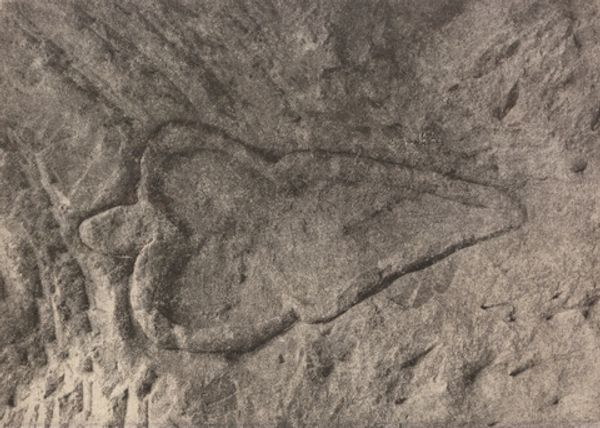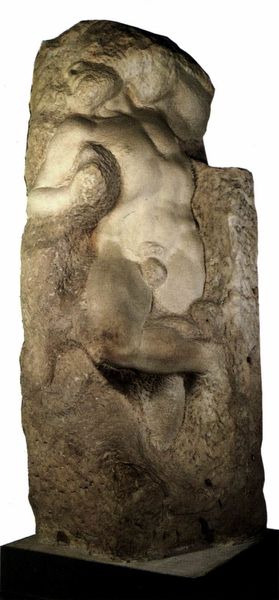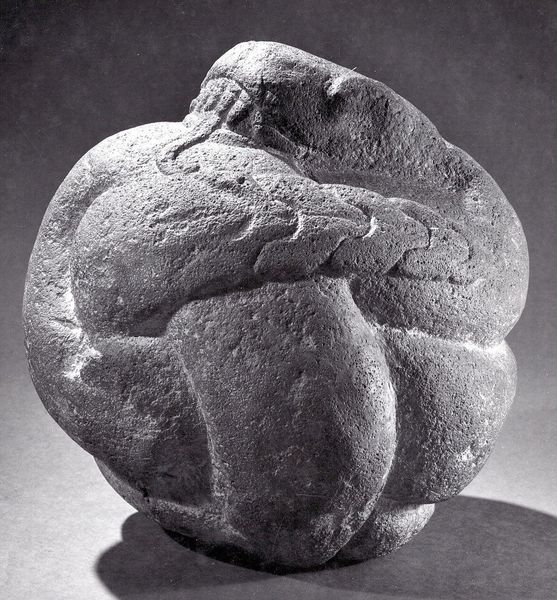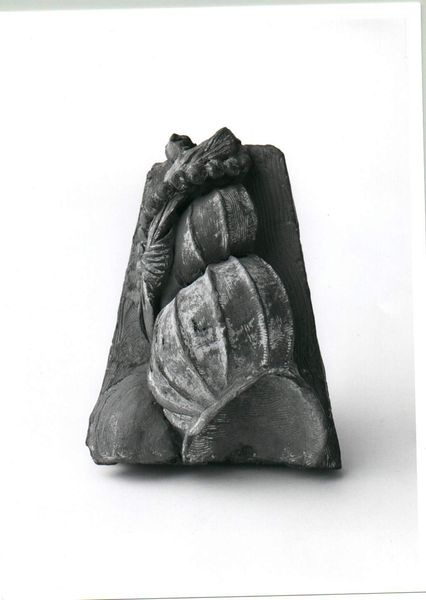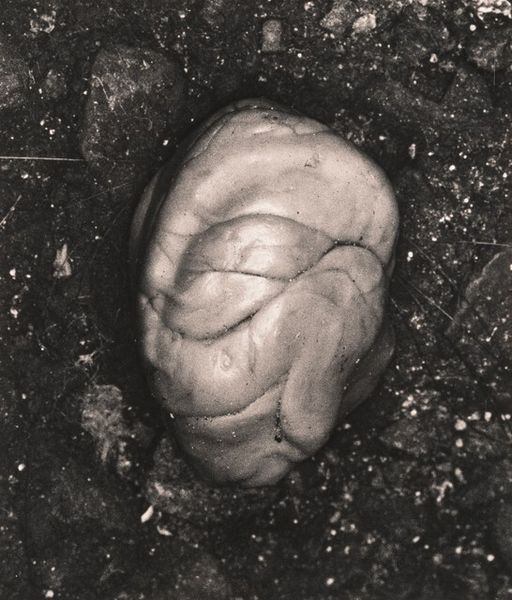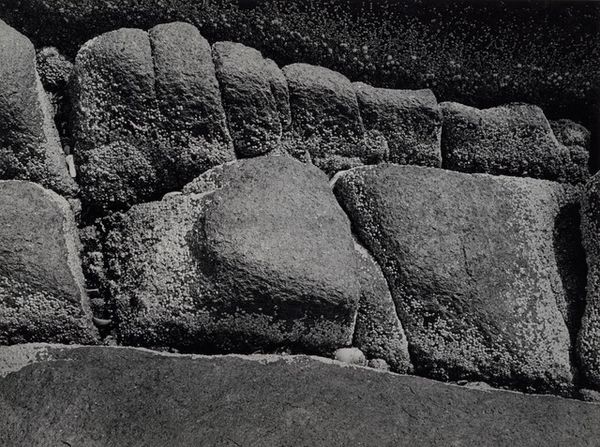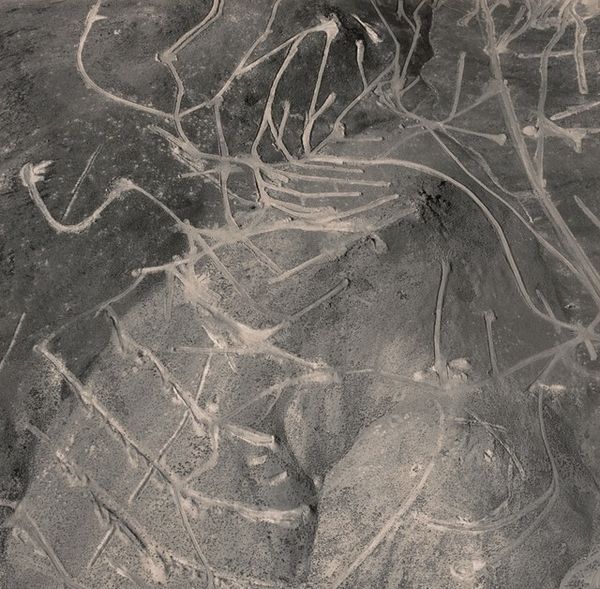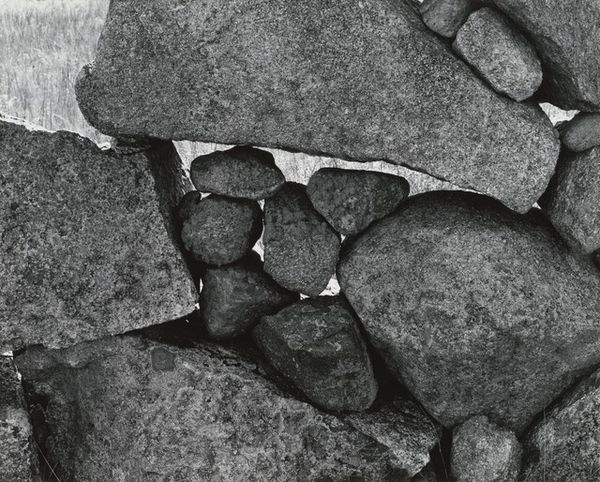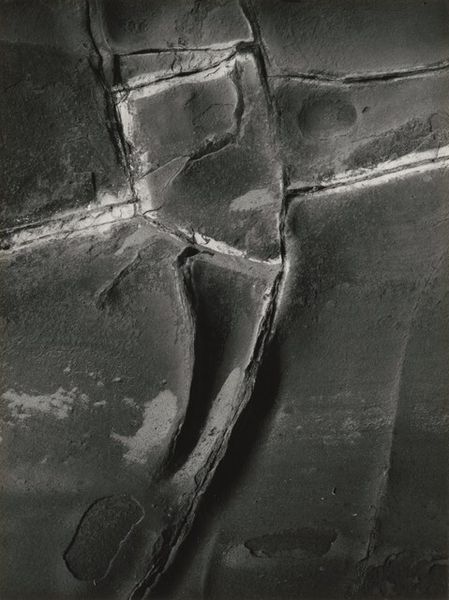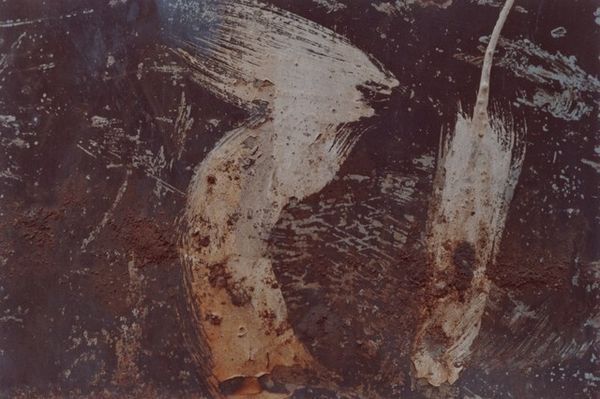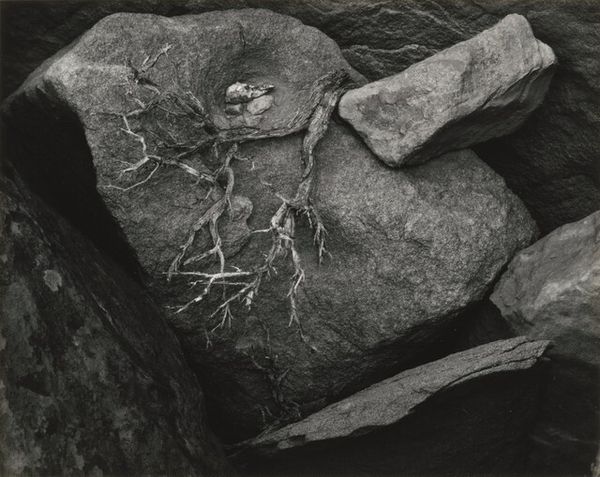
sculpture
#
african-art
#
sculpture
#
figuration
#
sculpture
#
abstraction
Copyright: Ana Mendieta,Fair Use
Editor: Here we have Ana Mendieta’s "Untitled (Guanaroca: First Woman)" from 1981. It appears to be a sculpture carved directly into rock. The shapes are evocative, primal. What stands out to me is the deep carving in the stone. What's your perspective on this piece? Curator: What strikes me is Mendieta's explicit engagement with the material – this porous rock – as integral to the work’s meaning. The 'how' of its making is paramount. Consider the physical labor involved, the act of excavation and carving performed by the artist directly into the Earth's very substance. How does the labor, the earth itself, challenge conventional ideas of 'sculpture' as detached object? Editor: I see what you mean. It's not like she’s created something new so much as revealed something already there in the rock. It becomes less about *her* artistry and more about… exposing something elemental. Curator: Precisely! The consumption of resources –the chiseling away of rock – to reveal this symbol of Guanaroca challenges traditional notions of artistic creation. The act itself becomes a social and political statement. What ideas of production, labor, or artistic value might she be playing with? Editor: Well, thinking about labor, it's definitely not mass-produced! And that it's literally part of the earth means it can’t be commodified in the traditional sense, right? It exists outside the typical art market cycle. Curator: Yes. Mendieta is commenting on these structures, positioning "Untitled" outside of the capitalist modes that shape the art world. Editor: So it's not just about the image; it's equally, or maybe even more so, about the materials and the way it was made. It makes me rethink what 'art' can even be. Curator: Exactly. By highlighting the material and the process, Mendieta invites us to reconsider art’s social and economic context.
Comments
No comments
Be the first to comment and join the conversation on the ultimate creative platform.
